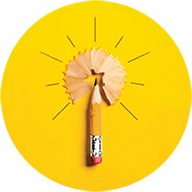How We Human
We are in the business of human development. When considering purpose, goals, and outcomes for education, the essential question is, what kind of humans are we developing?
It’s May. In much of the Northern Hemisphere, May signals the close of the school year. It’s meant to be a time of celebration for all of the growth, accomplishments, and relationships from the year. May Days, Lei days, graduations, celebrations of learning, project exhibitions, and excitement over summer bring great joy. This year, though, we are all a little more contemplative than in many Mays. Our schools are grappling with a harsh reality, and we need to hold space for this sadness.
In the US, and I hate to say it, but so far this year, there have been 17 school shootings, and 39 incidents involving gunfire. (“How Many Schools Shootings Have There Been This Year After Nashville Massacre?”) That is causing deep grief, fear, stress, anxiety, and concern for everyone in education, our communities, and most importantly, our children. Your feelings, the human reaction to these tragedies, are valid. It’s ok that even on the most engaging and fun of school days, our answer to, “how are you,” is simply, “I’m ok.” It’s fair to be considering what it means to be in education when there is so much pain. You are not alone, and you are appreciated and loved.
In the midst of the crisis of violence and the underlying anger and hate, we still have hope. It’s there in the faces of our students and each other. It’s in the students raising their voices in protest. And it’s up to us as district and school leaders, teachers, parents, and community members, to realign our sense of purpose in learning around creativity, imagination, and authentic deep learning. Building a sense of identity, self-confidence, security, and a belief in possibility are necessary to cultivate conditions where humans learn best. School can be a place of inspiration and problem solving, a place to bridge different perspectives, and a place for linking our communities if we decide that our goals are love and empathy, not scores. We’re here to serve humans, for humanity, not numbers.
Personally, I’m thinking about projects that are student centered, student driven, like that of a humanities teacher in New York who supported students reflecting on their learning over grades and found that the “Letter of My Growth” made space for students to use that metacognition as a tool for managing anxiety about school. I’m also thinking about a fourth grade school social studies teacher in Hawai’i whose work on indigenous connections to community led to students, in their own words, sharing increased confidence, deeper connection to their culture, personal power and pride. Even with strong content, these are simple strategies to make sure students feel seen and heard as they are, not as we expect them to be.
As you reflect on your school year, and dream for the year ahead, how will you align your values and the love of learning with the ideas and strategies? Community and connection are the essential first step in supporting students’ learning, and the What School Could Be Caring and Connected Communities Playlist offers robust thinking to support practical steps in this aim. Listening to Students, Relationship Mapping, Community Circles, and Culturally Responsive-Sustaining Pedagogy (CRSP) are just a few great concepts to add to your thinking now and for the future. I recommend a simple step for everyone to try today, in every faculty meeting, colleague interaction, and every classroom: start by asking, “Are you ok?” Then wait, give time for thinking, and listen to the response with your whole heart.
What kinds of humans are we developing? That is up to us. Our gardens of learning can be lush with love and imagination, critical thinking and possibility, and so much more, if we choose to focus on the humans. This May, let’s focus on our humanity and the many reasons we have to celebrate, and let’s carry it forward in our planning and dreaming.
___________
Susannah Johnson
What School Could Be

